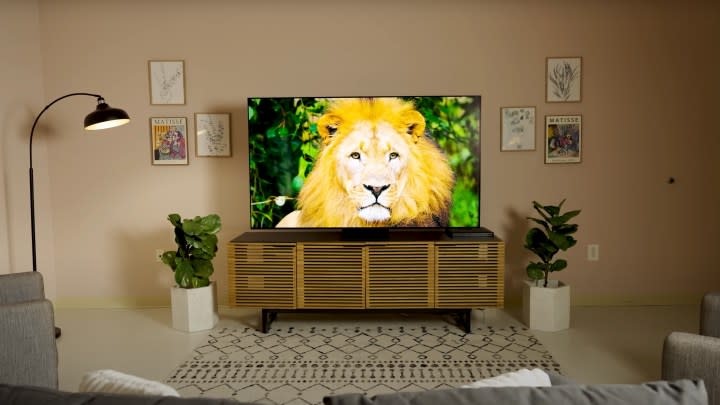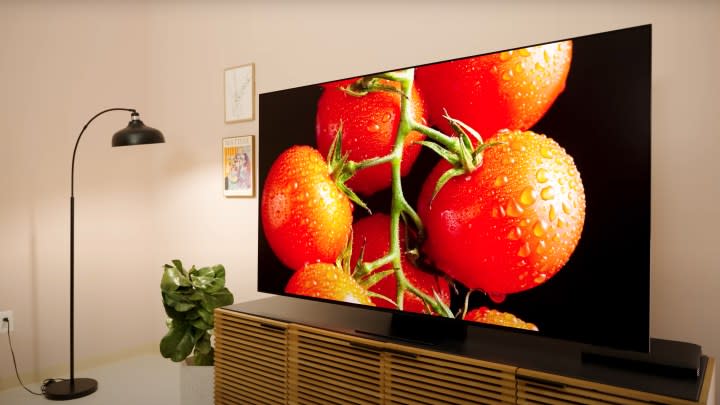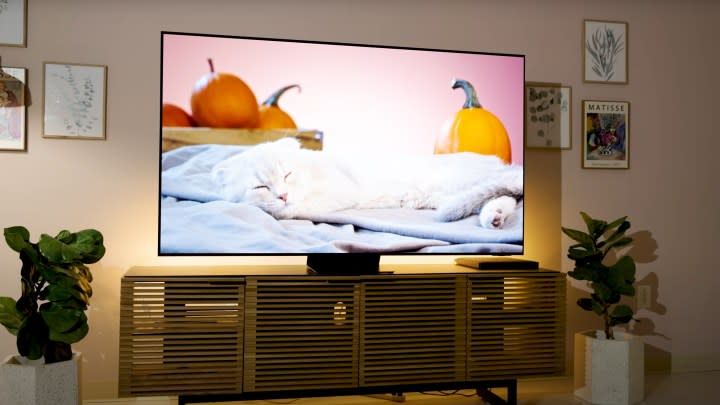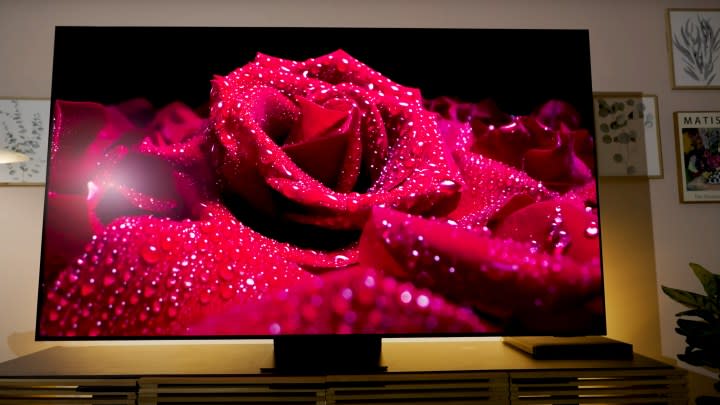Samsung S95D OLED first look: a reflection on excellence
I recently traveled to New Jersey to visit Samsung for an up-close and personal look at the flagship TVs in its 2024 lineup, which includes Samsung’s 8K Neo-QLED and 4K Neo-QLEDs, and the reason we’re here today: the S95D.
The S95D is Samsung’s flagship OLED TV for 2024, and it has been the subject of some consternation for some TV enthusiasts because it has a new anti-glare or anti-reflective screen coating. Is there any merit to that concern? Has it overshadowed how good this TV could actually be thanks to a new 3rd generation QD-OLED panel? Is it any brighter? Should we be excited about this TV?
I’m going to answer all of those questions – and you might be a little surprised by what I’m about to say.
Samsung S95D OLED First Look | Way Better Than You Think
Glaringly unapparent
Let’s not waste any time here, OK? I’m going right for the jugular. If you have been worried that this TV’s picture quality would suffer in any meaningful way due to the implementation of Samsung’s new anti-glare technology, then let me lay those concerns to rest right now.
This TV looks phenomenal. There has been no sacrifice to brightness, no sacrifice to richness, no apparent loss of gloss – wet stuff still looks wet, shiny stuff still looks shiny. It’s absolutely incredible.
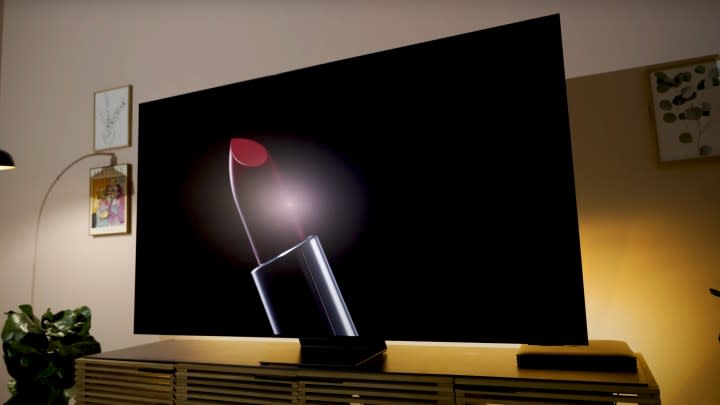
First, let me reiterate what I said at CES, but perhaps with some more gusto: this new anti-glare technology Samsung has developed is where exterior light goes to die. When we filmed the 8K and 4K flagships for our video coverage, we had to be clever about where we placed our studio lights because the lights we brought in for the shoot were so powerful and bright that, even when aimed at the ceiling, we were still getting some light spillage on the panel – and those TVs have the anti-glare tech that has earned Samsung a reputation as being the most bright-room friendly TVs you can buy.
But the new anti-glare tech is like black magic. It’s like Vantablack — the carbon nanotube stuff? If you’ve ever seen that, then you know – it’s like a black hole. Light goes in, but it doesn’t come out.
Our studio light puts out 56,000 lux at 1 meter. It will temporarily blind you if you look at it. The S95D seems to be completely unaware, not only of the brightness of the light, but of its very existence.

It’s the most impressive anti-glare and anti-reflection I’ve ever seen on a display. Samsung deserves some huge props for making this.
Now, I know that at CES, in a side-by-side comparison, we saw what seemed like minimal loss of gloss or luster. But now that I’ve seen this TV alone, I know that it is not perceivable outside of a side-by-side comparison – we’ve talked about that before, where a side-by-side comparison skews your perception of your own power of perception.
Video of water looks wet; there’s tons of luster and shine there. I’d even go so far as to say it seems like it’s got more of a luster to it in the peak highlights. But maybe that’s because this is the brightest OLED overall that I’ve tested to date.

That’s right. Not only did the anti-glare implementation — which is notorious for sapping TVs of their potential brightness — not dim this TV, but it is actually far brighter than I expected it to be.
I would have given this TV a huge thumbs-up if we got the anti-glare and it was exactly as bright as the S95C last year. But we got better than that. This TV has the anti-glare, and it is brighter than last year.
Performance impressions
As I tested this TV, I got up to 1,750 nits peak white brightness from a 10% window, about 900 nits in an 18% window, and almost 300 nits full-screen white. Now, LG’s G3 and. presumably. G4 OLED can get brighter in the whites, I suppose. But the S95D’s real ace in the hole is its color brightness, which can exceed WRGB OLED-type panels while retaining saturation, which has always been what made QD-OLED TVs look extra special – but that effect has been ramped up a bit with this new model.
I’ll also mention that in Filmmaker Model with the Warm 1 color temperature selected – which, by the way, is not the default for Filmmaker Mode – the white balance, gamma, electro-optical transfer function (EOTF) tracking, and color accuracy measurements were stellar. I’m not sure why, but the Warm 2 color temperature setting did not yield nearly as accurate results. I’ve mentioned this to Samsung, and we’ll see if anything changes by the time this TV hits the streets.
Now, to be clear, this TV still needs a full review. While I was able to measure this and three other TVs, I was not able to do a super-deep dive. I am pretty happy with the lack of judder on 24 frames-per-second content for movie watching, and what I’m seeing from Samsung’s latest processors is better upscaling and cleaner presentation of low-resolution, low bit rate, and low bit-depth streaming content – though it remains to be seen how close Samsung can get to Sony’s processing chops in those regards.
I’ll also mention that while I tested the most accurate picture modes on this TV, Samsung does offer other picture modes that intentionally over-brighten the image, so if you like a brighter picture, this TV can certainly do that, no problem.
But I think the real great news here is that, even in its most accurate modes, this TV abates glare so well that you don’t have to over-brighten an image to get better perceived bright-room performance. Normally, we want to see a raised APL, or average picture level, so the picture is bright enough to clap back at the bright light in sun-soaked rooms. And this TV can do that, better than most OLEDs I’ve tested, but it doesn’t have to. The anti-glare makes this TV more bright room-friendly than most TVs on the market, I think.
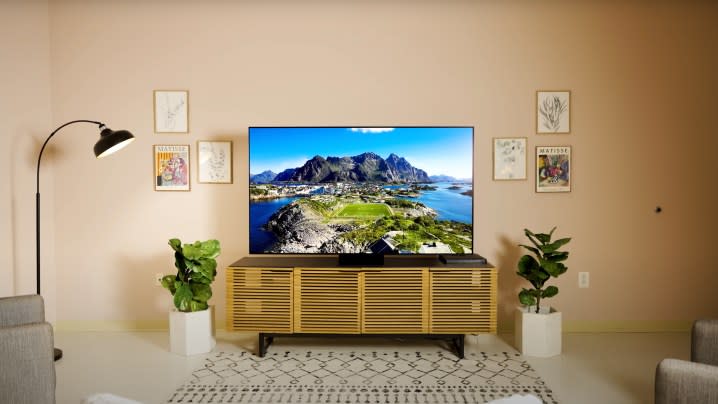
I mean, really, other than price, folks are just about out of excuses for not buying an OLED when this TV exists.
This is not a full review. I haven’t tested the gaming mode on this TV. I haven’t covered the changes to the Tizen smart OS or talked about how they make the experience better or worse. There’s a new Knox security chip we should talk about, as well as its merits as a smart home hub. I didn’t do a deep dive into its sound quality (it’s pretty great). So, for all those reasons, I can’t wait to get this TV in for review and try to find its hidden weaknesses – if it even has any – because from what I’ve seen so far, the S95D is a monumental achievement for Samsung.
